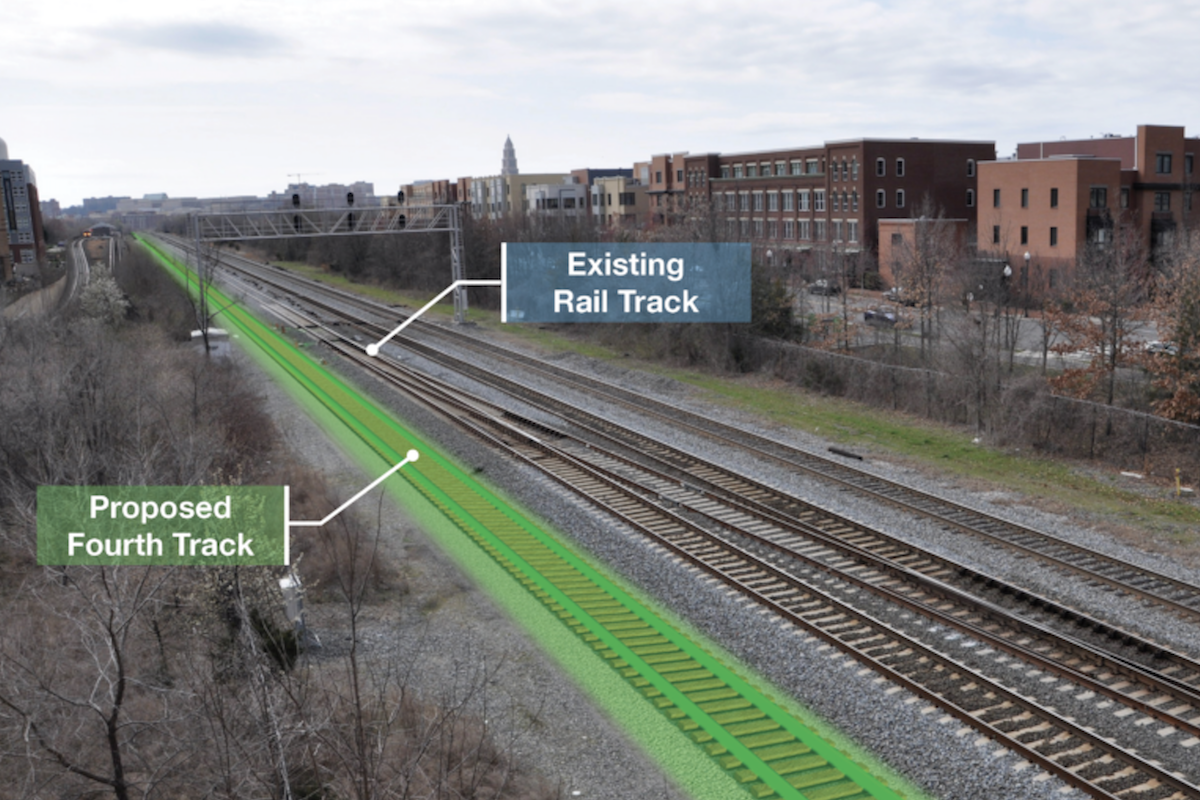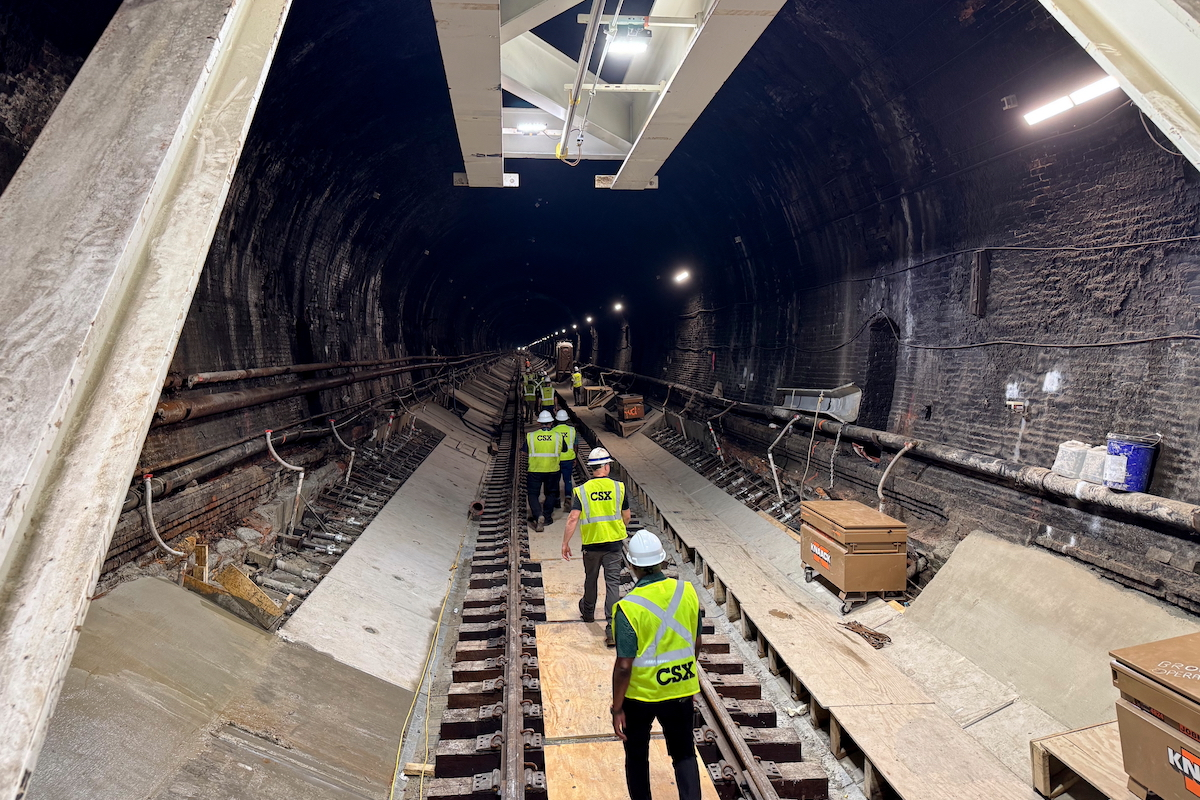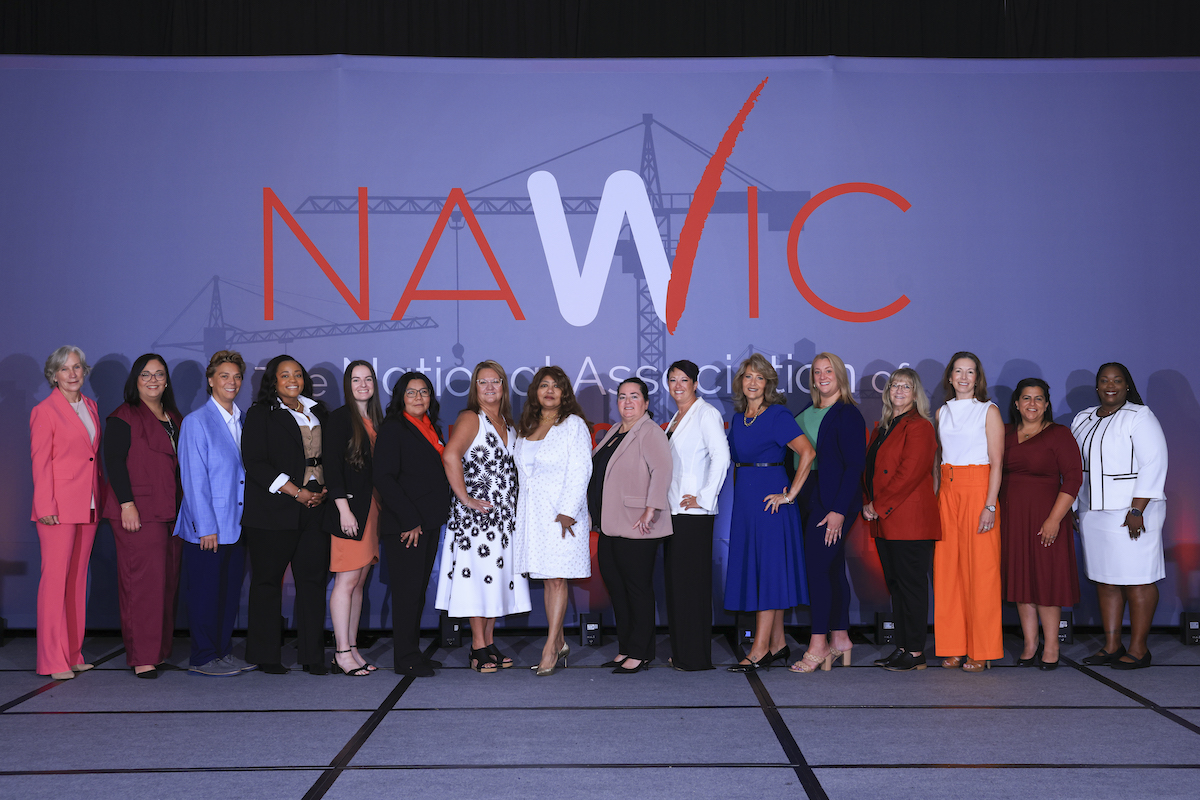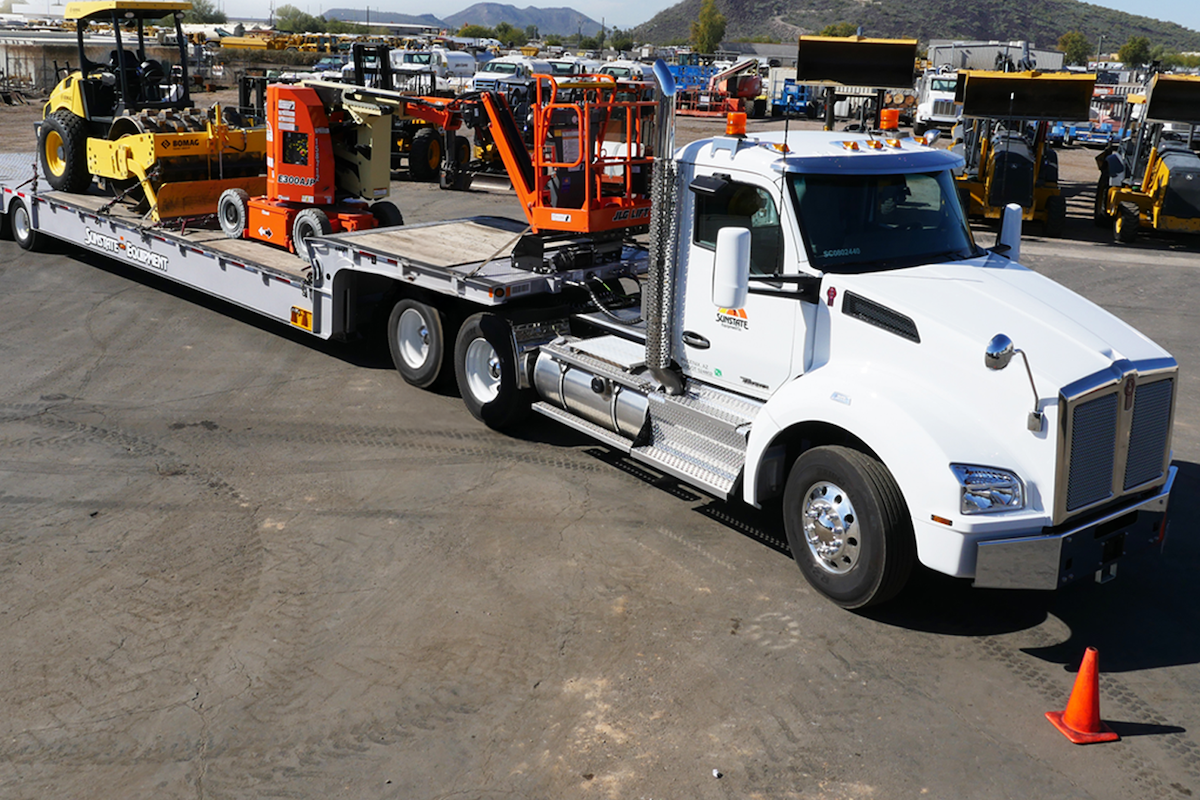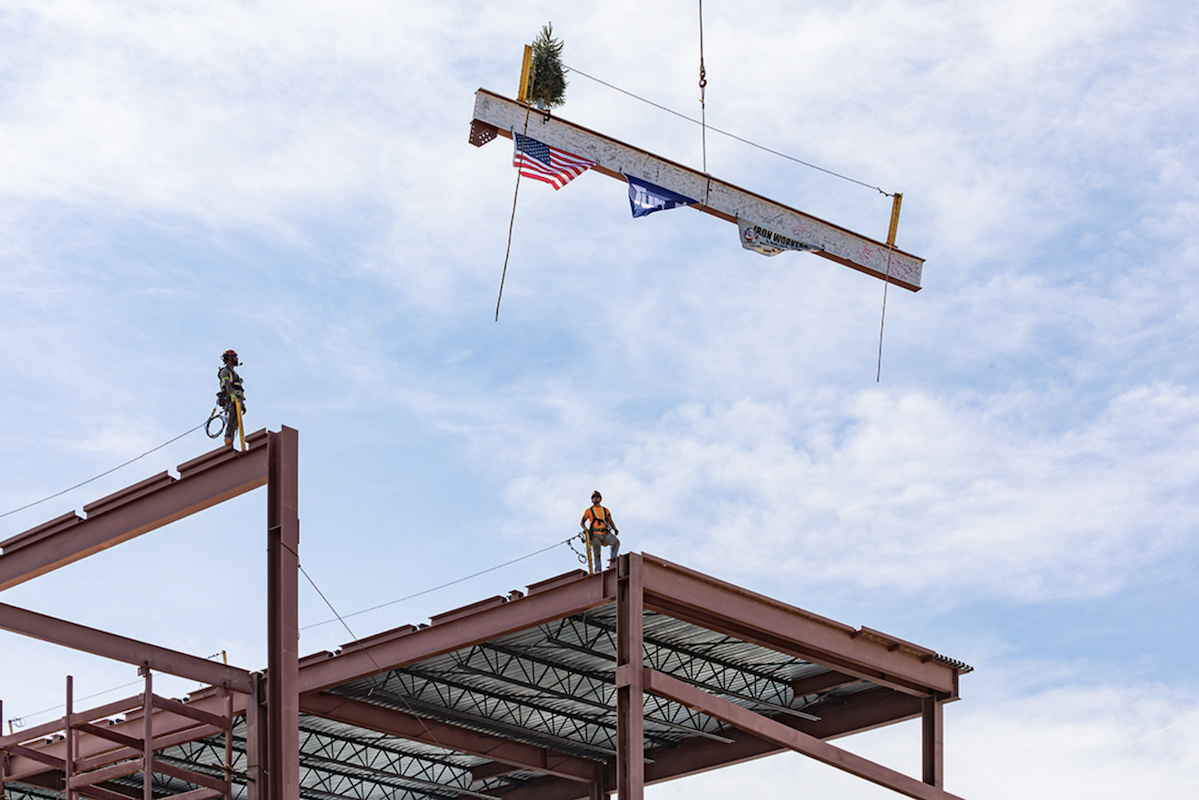Originally, this segment of I-80/I-29 was only two lanes in each direction, which caused daily back-ups, especially during peak hours; crashes and other issues were also caused by the original, tightly-spaced interchanges. The DDF was constructed to include three lanes in each direction for I-80 express traffic and three lanes in each direction for I-29/I-80 local traffic. The existing interstate was also built with several left exits/entrances, which are not typical and contradicted driver’s expectations. They are also less safe than right exits/entrances.
I-80 stretches from California to New York and I-29 stretches from the Canadian border to Kansas City. The crossroads in southwestern Iowa is used by many long-distance travelers and trucks hauling goods across the country. This roadway also connects the two cities of Council Bluffs, Iowa, and Omaha, Nebraska, with many people in the area commuting to one or the other daily for work, school or other purposes. The DDF currently carries an estimated 68,000 to 91,000 vehicles per day; 11 to 25 percent of those are trucks. By 2030, traffic on the overlap section of I-80 and I-29 between the system interchanges is expected to increase to more than 120,000 vehicles a day.
The $482 million highway reconstruction project was an undertaking that began construction in 2008, but was accelerated over the last eight years to complete it faster for the traveling public. The westbound I-80 and northbound I-29 reconstructed lanes, spanning three miles between the east and west system interchanges, opened in March 2019. The final phase, which began in August 2019, included the I-29 southbound/I-80 eastbound local lanes and connections to already completed ramps in the east system Interchange. This phase's length was approximately 1.5 miles. The anticipated final cost of Phase 3 is $63.4 million.
The primary contractor for this phase is a joint venture of Hawkins Construction, United Contractors, and Cramer and Associates; past phases were also awarded to PCI, Ames, and Sadler Electric. Designer and engineers include Iowa DOT, Jacobs, Benesch, WHKS, Iteris, Stanley, HGM, and HDR (which was selected by Iowa DOT in 2013 as program manager and general engineering consultant). Partner agencies include the Federal Highway Administration, USACE, the City of Council Bluffs, and the Iowa West Foundation.

| Your local Volvo Construction Equipment dealer |
|---|
| Richmond Machinery & Equipment |
“The Iowa DOT chose a DDF design because it offers greater flexibility to travelers, reduces congestion and will improve safety and efficiency,” explains Mark Pohlmann, HDR’s manager for the program. “For example, it allows traffic to keep moving in both directions, even if lanes are closed because of a crash or maintenance. This design allows through traffic to utilize both express and local lanes, offering more lanes overall.
“The previous design caused through traffic to merge with local traffic at on and off ramps, creating congestion during peak traffic hours. The DDF separates through traffic from local traffic, eliminating delay and conflict. The DDF will also reduce the number of crashes caused by merging traffic between interchanges.”
Pohlman also reports that a Critical Path Method (CPM) Schedule was utilized on the project, commenting, “This was the first in the state to use a robust CPM specification for contractors, requiring them to commit to much more specific construction timelines. A CPM schedule offers the team much more transparency into the schedule so that all involved understand the progression of work as well as any delays that are encountered and their causes, and can fairly compensate contractors when needed as well as identify and plan for risks well ahead of time.”
“In 1997, the City of Council Bluffs and Metropolitan Area Planning Agency conducted a study of the Interstate system in Council Bluffs. The Council Bluffs Interstate System Needs Study, completed in 1999, indicated that many of the Interstate’s features were outdated and did not meet current design standards, guidelines, or operational criteria. Additionally, the system did not provide adequate travel capacity for future traffic.
“In 2002, the Iowa DOT initiated the Council Bluffs Interstate System Improvement Program to address the issues raised by the needs study and to develop solutions for improving the Interstate system in the Council Bluffs metro area.”

| Your local Bomag Americas dealer |
|---|
| Linder Industrial Machinery |
He adds that the Council Bluffs Interstate System Improvement Program’s reconstruction of Interstates 80, 480 and 29 has long been one of the largest efforts undertaken by the Iowa DOT. It includes 47 bridges, 12 interchanges, and 146 highway line miles.
Although the complex reconstruction of the Interstate network began in 2008 with the I-80 Missouri River bridge (connecting Council Bluffs to Omaha), it was not until late 2013 that the Iowa Transportation Commission committed to funding the program for the full build-out of all improvements.
Three more interchange reconstructions remain to be finalized – currently, the I-29/Nebraska Avenue interchange and the I-29/I-480 system interchange are on track to be completed in 2022 and 2024, respectively. The final major reconstruction package, I-80/Madison Avenue interchange, has been delayed to 2025 due to forecasted statewide revenue shortfalls in the coming years.
Tight access and working next to live traffic were other challenges encountered on this project, says Schram. “We try to build as much as possible in the clear so that workers do not have to be near traffic, however some areas are unavoidable, especially at the interchanges near local roads. Overnight closures were utilized throughout the project when working in traffic lanes couldn’t be avoided.”
He adds that in March 2020, new protocols were quickly implemented due to the COVID-19 pandemic. At times, Schram reports, portions of the construction crews had to be quarantined due to exposures, which was a challenge for the contractor to stay on schedule. However, as a result of school closings and people working from home, commuter traffic volumes decreased by as much as 40 percent. The reduction in traffic allowed the contractor to close more lanes and revise overnight closure times. This flexibility meant that construction projects already underway were able to continue and remain on schedule.

| Your local Wirtgen America dealer |
|---|
| Dobbs Equipment (SC) |
Two new indoor fieldhouses for youth recreation have also opened, drawing more traffic to the area, especially on weekends. Significant residential growth is also projected for the east end of the Council Bluffs area and the surrounding rural communities in the years to come.
“The dual, divided freeway is the marquee project in the multi-year Council Bluffs Interstate System Improvement Program," says Schram. “Its completion marks an important milestone for the program and will greatly improve the travel experience for the tens of thousands who drive Council Bluffs roads every day. While we’re not done yet, this achievement means the end of this important modernization effort is in sight. I’m thrilled to be part of this project, proud of our team and thankful for all the partners who have helped us get to this point.”
Photos courtesy of the Iowa Department of Transportation



















